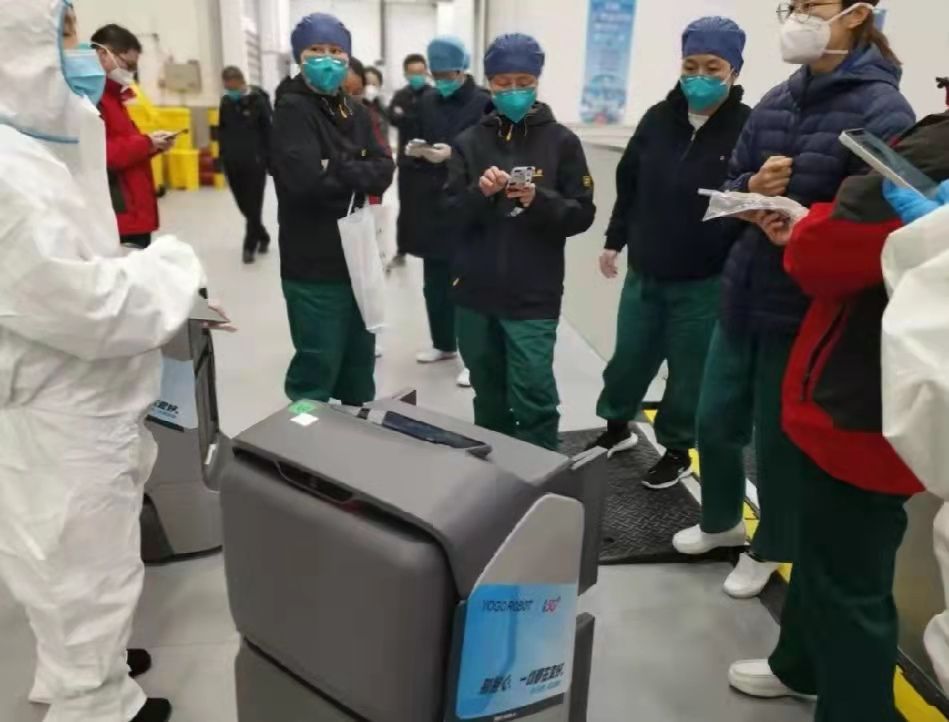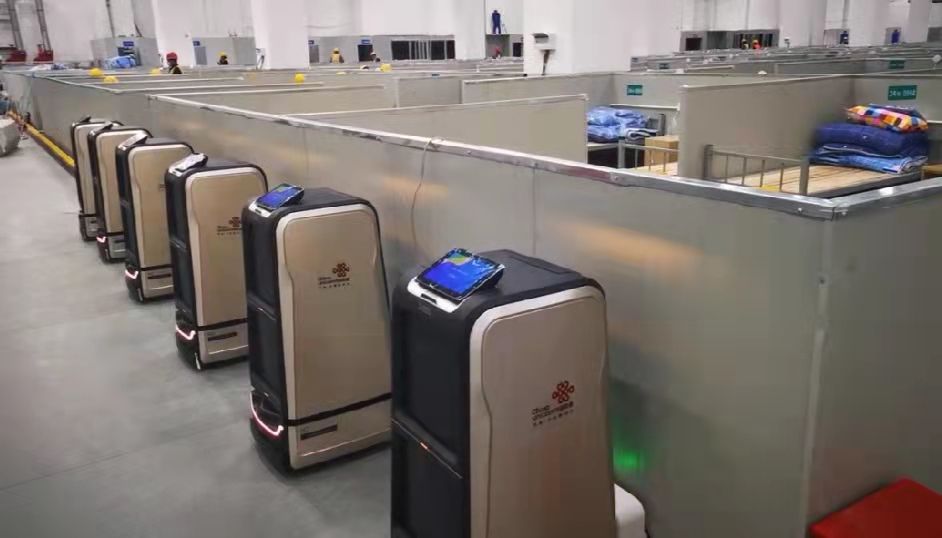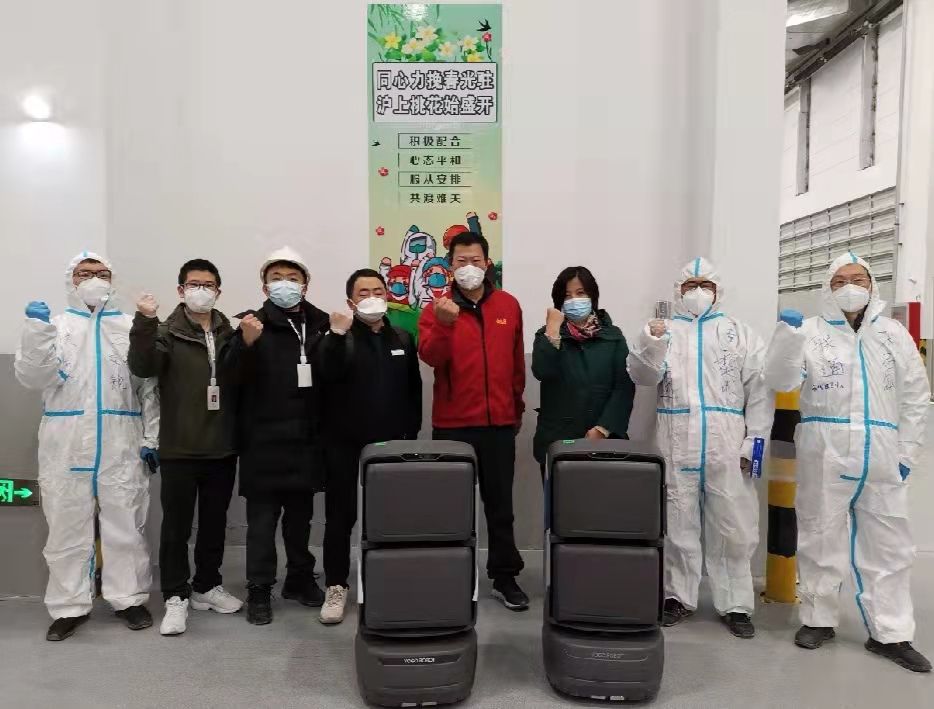Recently, with the outbreak of a new round of epidemics, Shanghai is making every effort to deal with the most severe and complex challenges since the normalization of epidemic prevention and control. In the face of the strong contagion and high concealment of the Omikoron virus, the establishment of a makeshift hospital to conduct unified and centralized management of patients is an important part of cutting off the spread of the epidemic.
The mission must be fulfilled, and the “Unicom Speed” will be staged again
On March 31, Shanghai Unicom received an urgent task from the Shanghai Municipal Commission of Economy and Information Technology – for Lingang Tongwang Road Fangcang shelter hospital urgently provides intelligent robot services. Shanghai Unicom responded quickly, convened multiple departments to set up a special team at the first time, and stationed in the makeshift hospital to make deployment arrangements. Faced with the urgent task, Shanghai Unicom, relying on years of experience in the field of smart medical care, quickly finalized the “Unicom 5G + Smart Robot Epidemic Prevention and Control Plan”. The first batch of more than 20 5G delivery service robots has been successfully stationed. Time did not wait, the project team immediately carried out map modeling and environmental survey overnight, and completed the delivery of more than 250 intelligent robots within 48 hours. Next, this batch of Unicom 5G intelligent robots will replace some medical staff to perform related tasks in Fangcang shelter hospitals, which will greatly help medical staff relieve the overloaded work pressure.
In terms of network security, at 22:00 on March 31st, after Huashan Hospital settled in Lingang Fangcang shelter hospital, it was necessary to urgently open a dedicated network line with Huashan General Hospital. Shanghai Unicom started the emergency response immediately, and the front and back departments quickly set up a security response team to deploy and arrange tasks. According to the preliminary research and judgment of the on-site environment, the security team quickly came up with three sets of technical solutions as backup for each other. After communicating and coordinating with the on-site medical team, the network data configuration was completed overnight and network engineers were arranged to go to the site for construction and opening. The construction environment of Tongwang Road Fangcai Hospital was extremely complicated. The network engineers of Shanghai Unicom immediately re-examined the lines and pipelines. With years of experience and excellent technology, they immediately decided to use the bare fiber method to open the hospital, which was finally completed at 2:00 a.m. on April 2. The mission provided a strong network guarantee for the epidemic treatment of the Huashan medical team in Lingang Fangcang shelter hospital.
5G empowered, small stature contains “Unicom wisdom”
The first batch of 5G distribution service robots to be stationed in this time is from Shanghai Unicom and a number of cooperative Created by partners. After China Unicom’s 5G distribution service robot is “on duty”, it will play an important role in the daily material distribution of makeshift hospitals. The robot adopts multi-sensor fusion indoor positioning technology, which can quickly deliver necessities such as catering and daily necessities to the designated bed according to the instructions, and then return to the origin autonomously after the delivery is completed, realizing fully autonomous contact-free delivery.


In addition, the robot can replace The simple but labor-intensive process work in the medical care process reduces the consumption of one-time protective materials while avoiding the risk of cross-infection, and improves the quality of epidemic prevention and control work more comprehensively and efficiently. All robots on site are equipped with Unicom 5G IoT cards. Relying on Unicom’s 5G features such as high speed, low latency, and strong stability, they can provide operation services more continuously, stably and efficiently. In the future, there will be more Unicom 5G intelligent robots “on duty” in Fangcang shelter hospitals, which will not only ease the work pressure of on-site medical staff, but also comprehensively improve the safety factor of on-site epidemic prevention. Innovative leadership and continuous contribution to “China Unicom”
At the same time as the emergency dispatch of robots, Shanghai Unicom is also rapidly preparing for the construction and development of the “digital twin command cabin”, which will greatly Data, artificial intelligence, digital twin and other technologies are integrated into operation management to improve the level of refined management. The multi-dimensional data collected by the robot is transmitted and processed in real time and finally displayed on the large screen of the comprehensive command to realize the dynamic display of multi-directional, multi-angle and panoramic data. At present, the development work is proceeding in an orderly manner. After the platform goes online, the “digital twin command cabin” can centrally control the robot, monitor the venue data in real time, help managers to make efficient decisions, and realize the integration of dispatching and data transparency in the cabin hospital. Efficient management of the whole process.

The epidemic is an order, and prevention and control is a responsibility. Shanghai Unicom, with its solid technical capabilities, efficient collaboration, and dedicated project team, once again demonstrated “Unicom Speed, Unicom Wisdom, and Unicom Spirit” in the face of urgent and difficult tasks. As “the national team for digital information infrastructure operation and service, the main force for building a smart society in China with a strong network, and the vanguard for digital technology integration and innovation”, Shanghai Unicom will use smart technology to build a solid wall of “epidemic prevention and control”, strengthen confidence in fighting the epidemic, and help Shanghai wins the battle of epidemic prevention and control!
Author: Cai Jiayi, Zhu Wei
Editor: Zhou Yuan
Responsible Editor: Tang Weijie
*Wenhui’s exclusive manuscript, please indicate when reprinting provenance.